This website uses cookies so that we can provide you with the best user experience possible. Cookie information is stored in your browser and performs functions such as recognising you when you return to our website and helping our team to understand which sections of the website you find most interesting and useful.
designated breathing zone 2.0
public art installation
Jane Haining Quay – Nyugati Square, PLACCC Festival, Budapest, Hungary, 2023-
designated breathing zone 2.0
public art installation
Jane Haining Quay – Nyugati Square, PLACCC Festival, Budapest, Hungary, 2023-

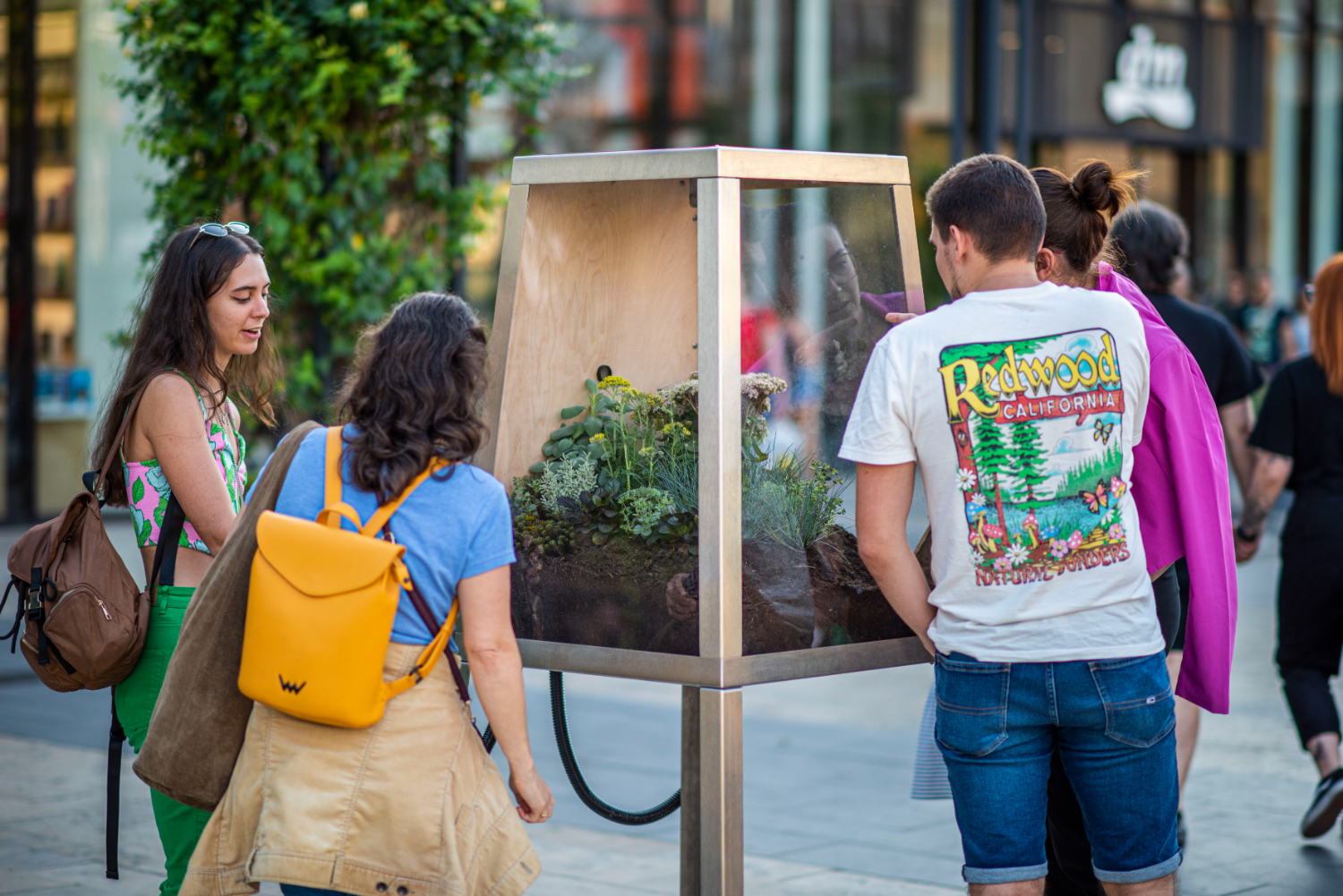
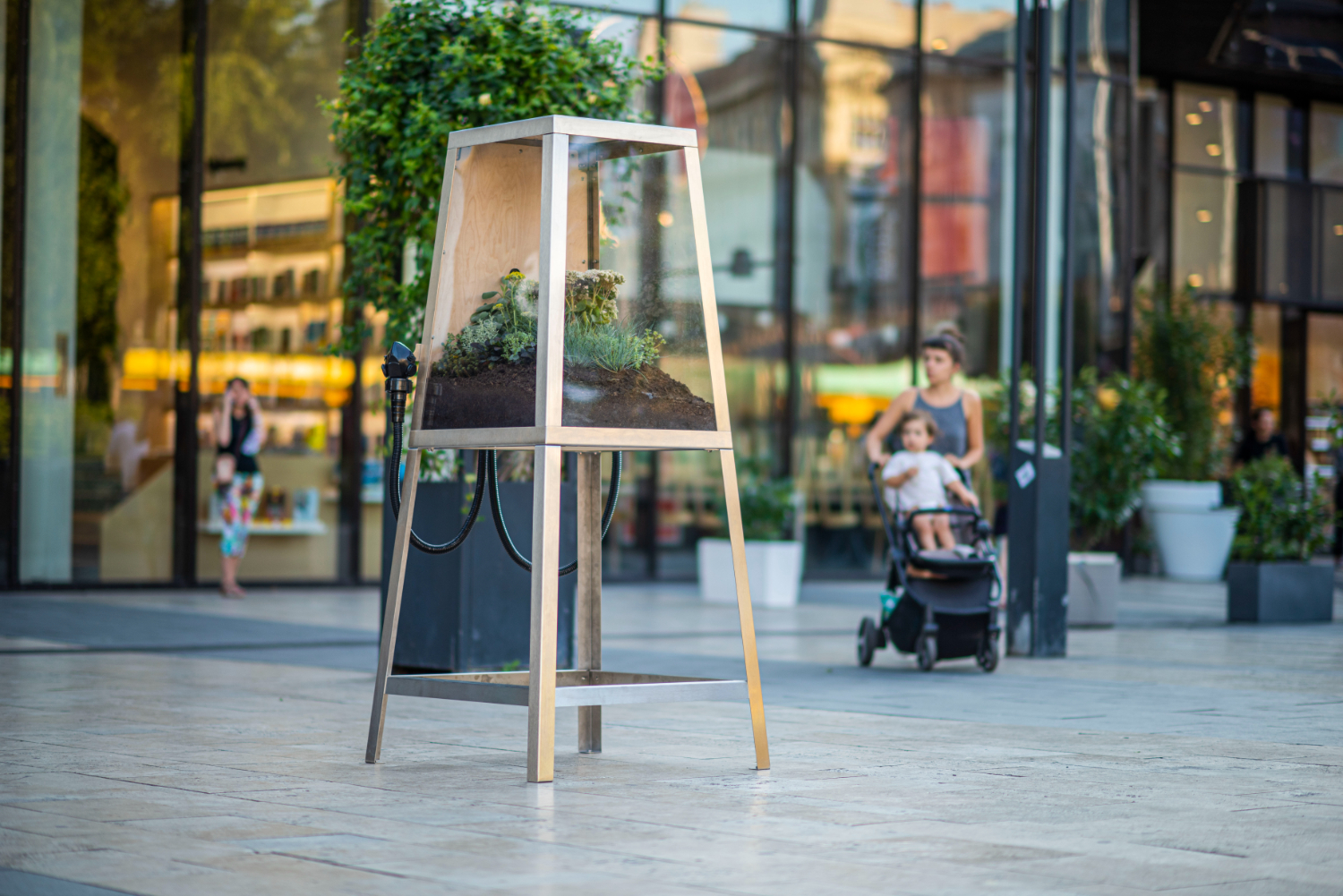
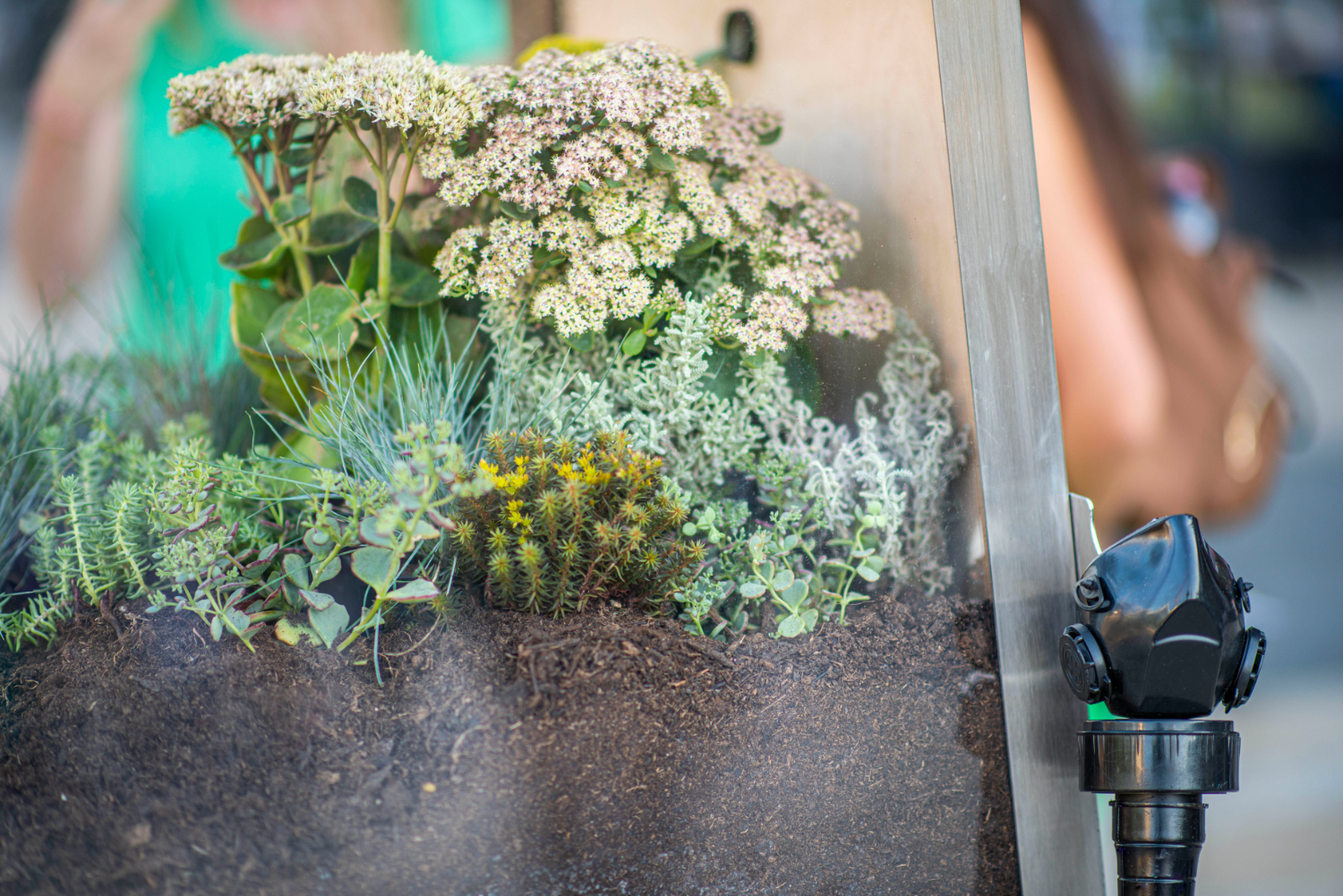
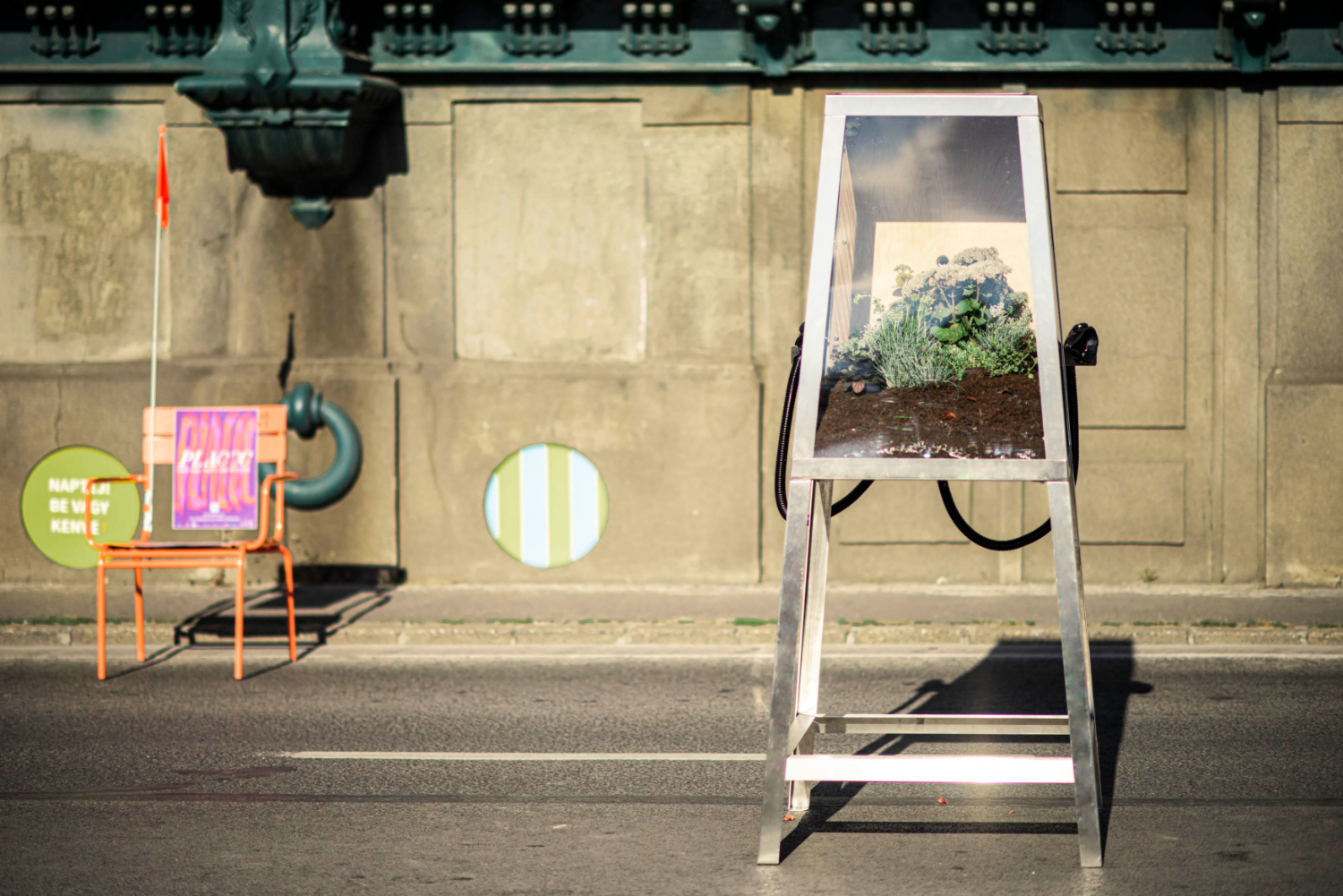
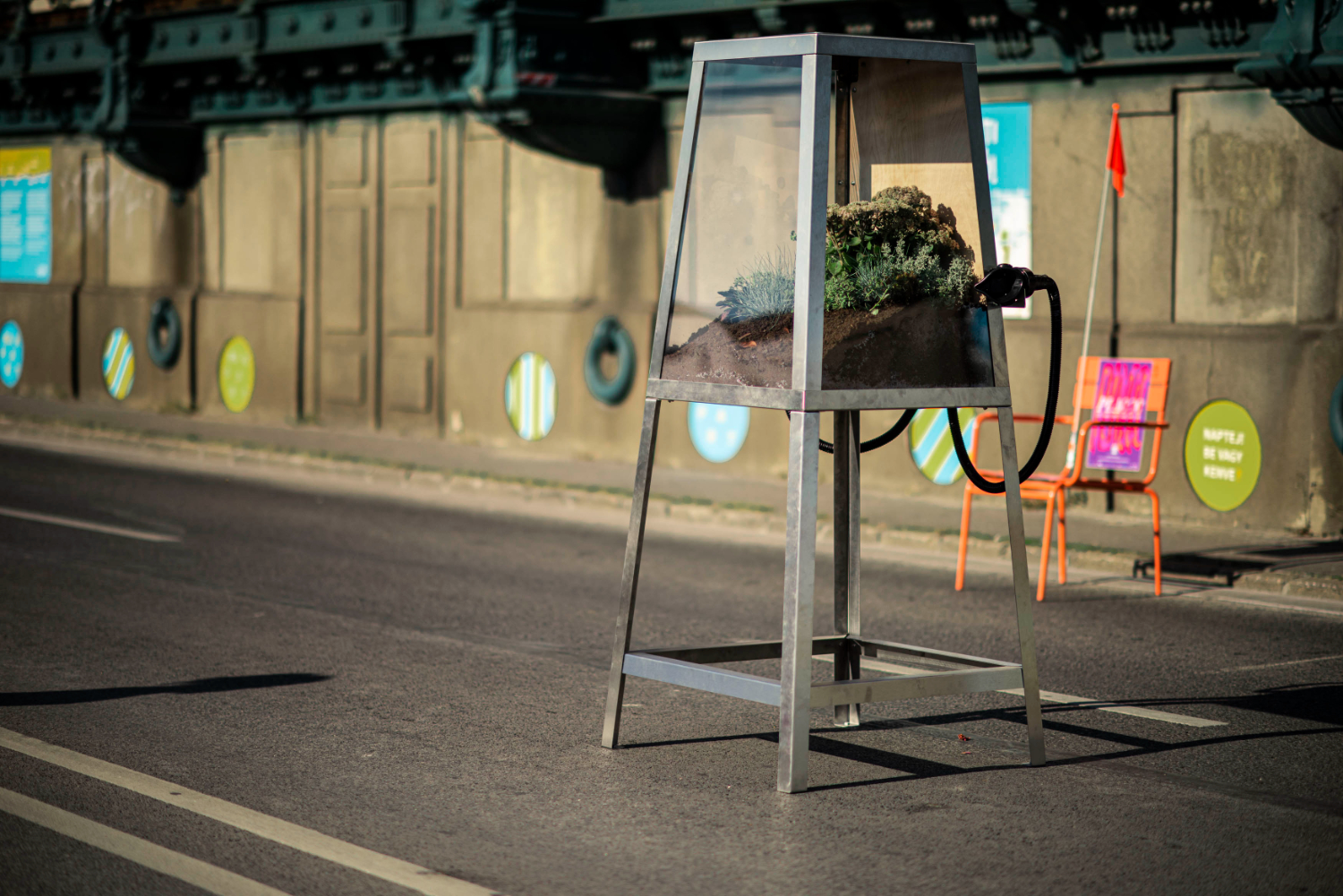
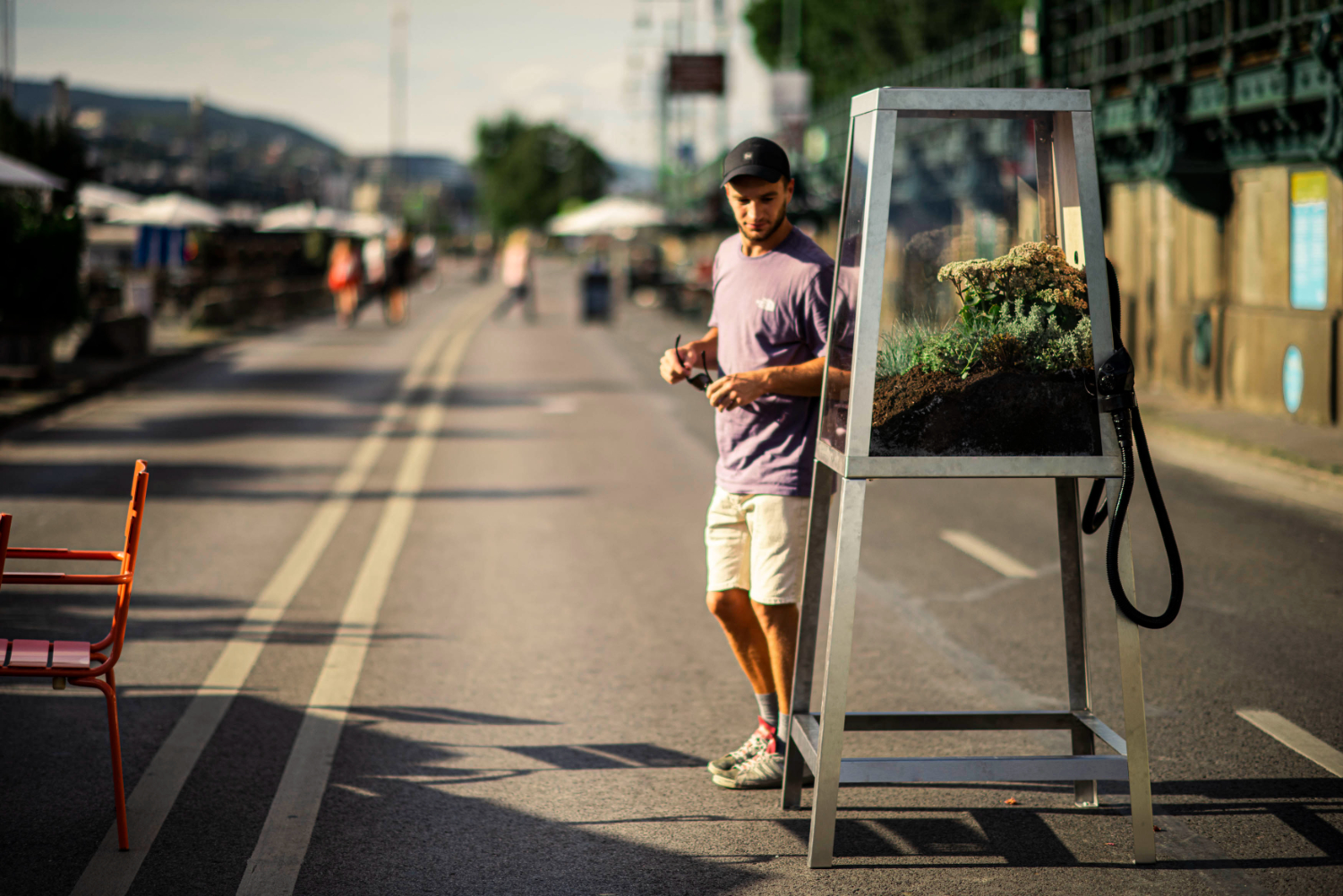
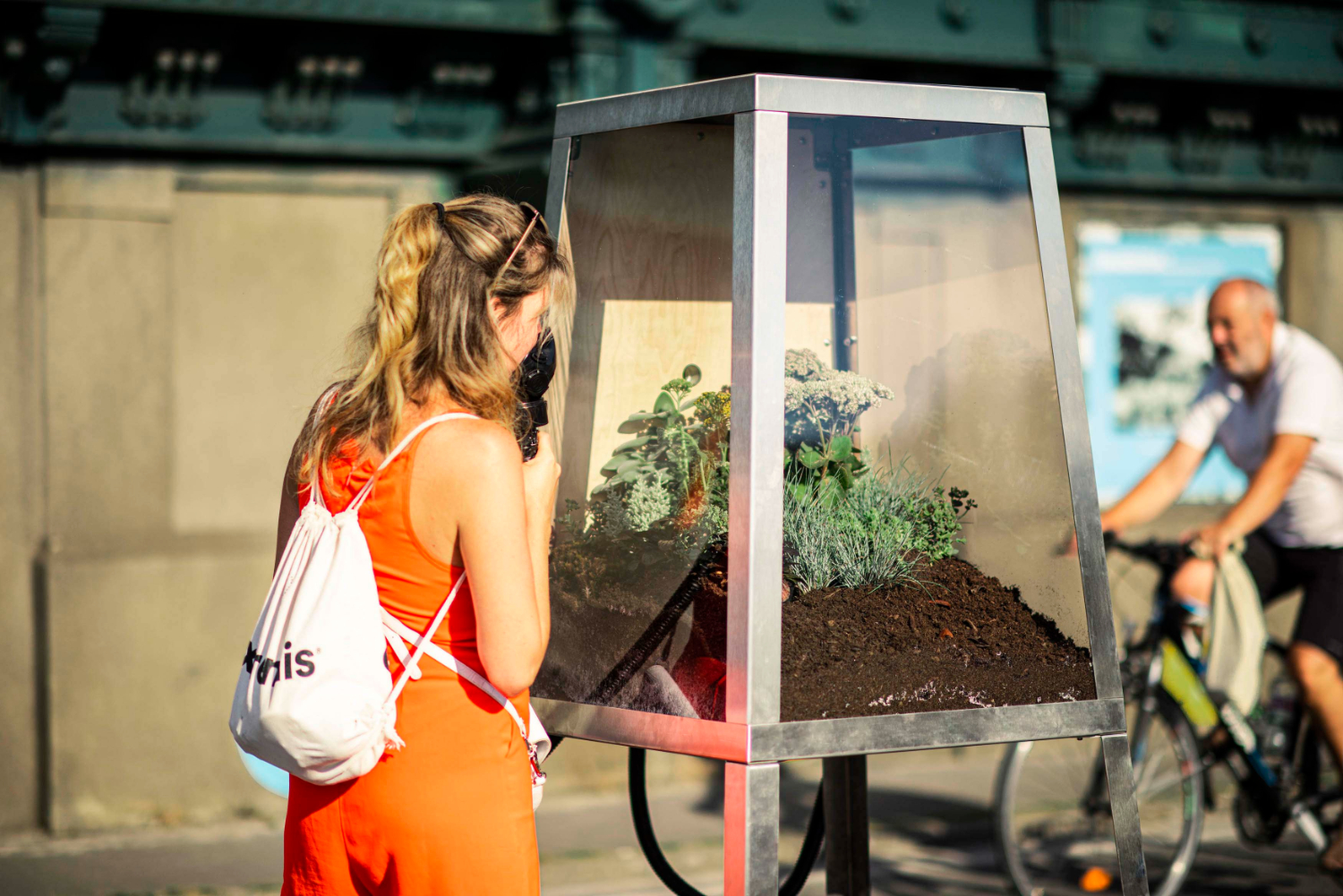
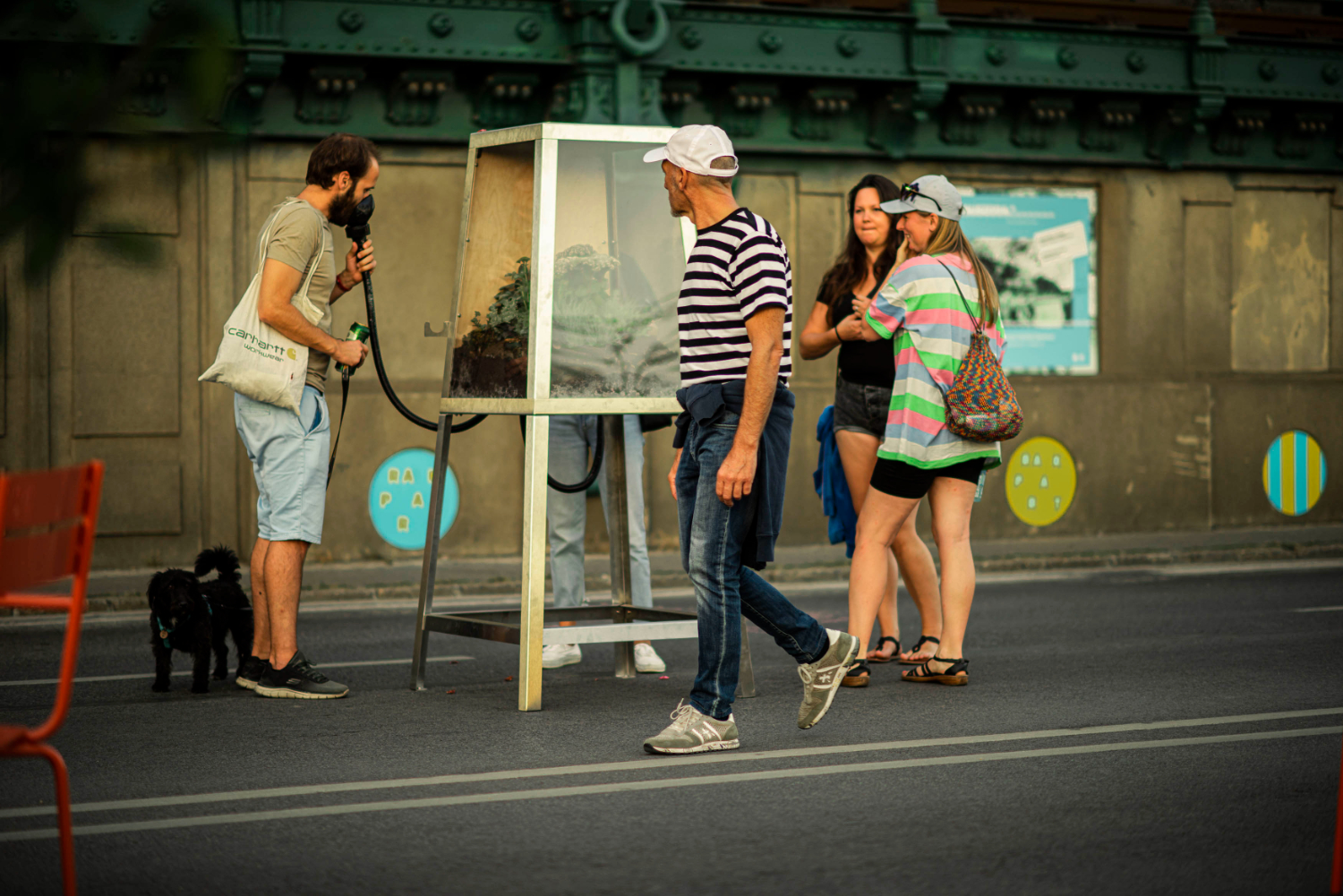
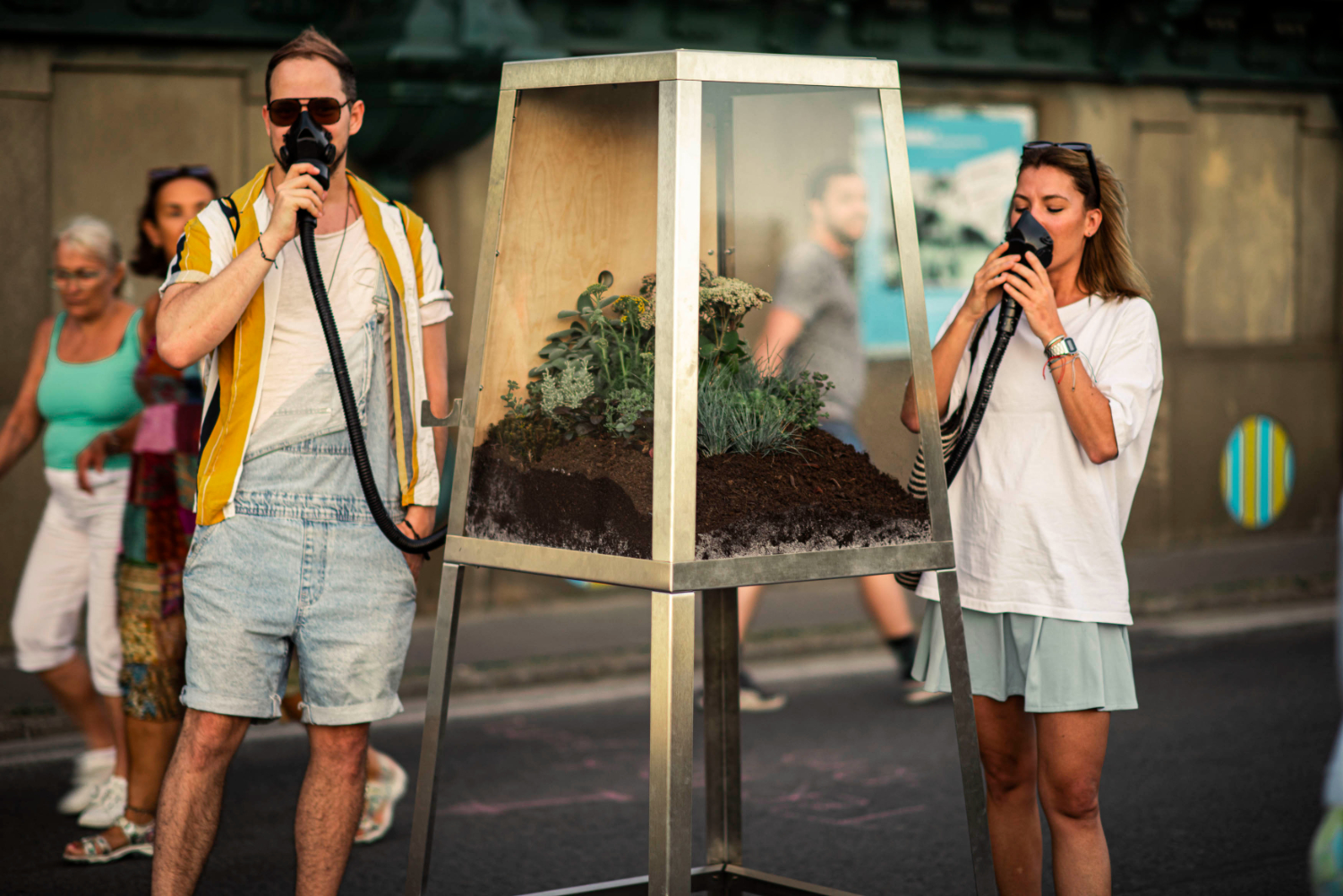
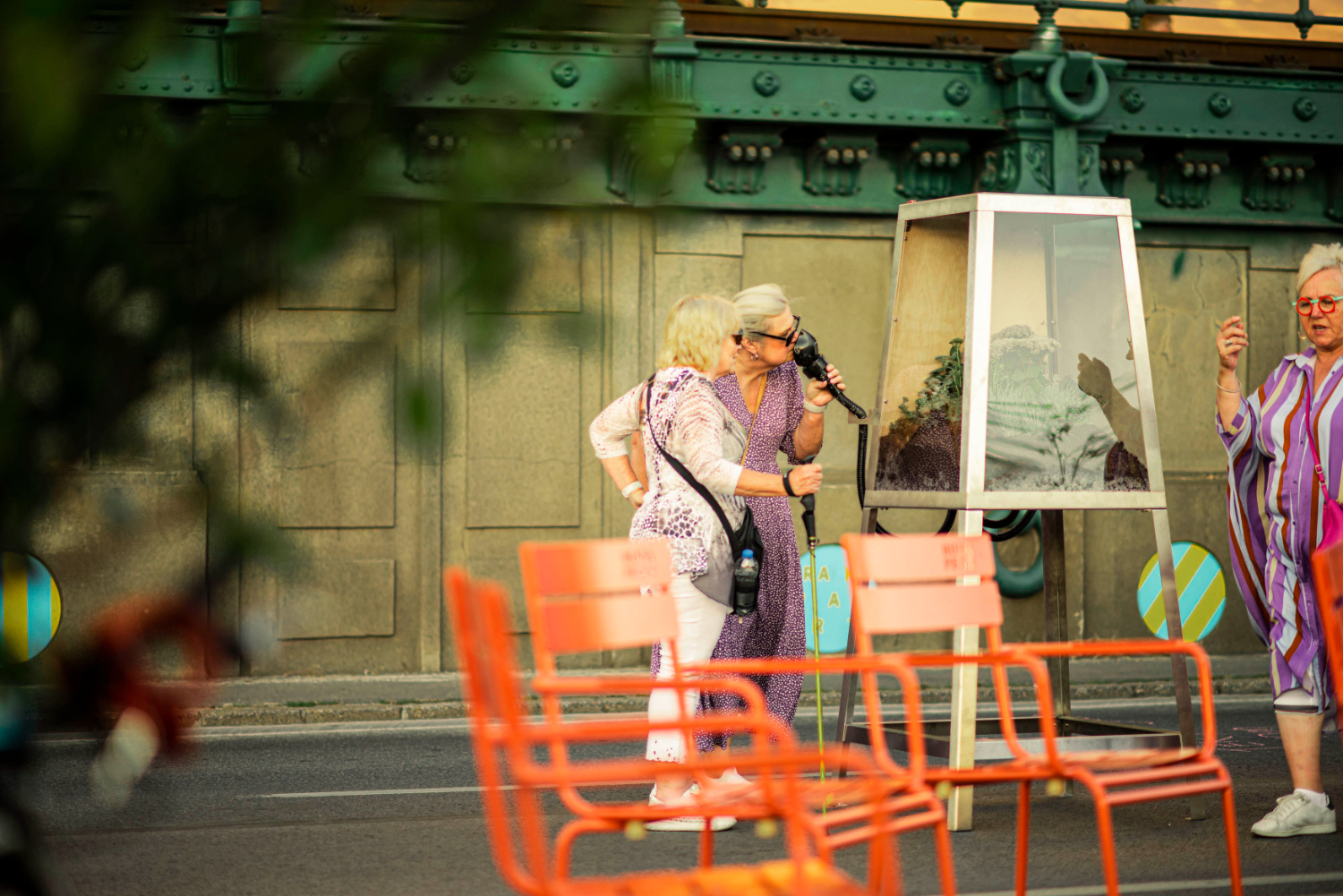
Photo: Attila Balogh
Ever felt thirsty for some fresh air? Would you like to get away, at least for a sniff, from the stupor of smog or tobacco smoke?
Designated Breathing Zone is a space reflecting on acute urban environmental problems. The spread of urbanisation is a global problem, with the loss of green spaces, road traffic and industrial activities all contribute to the deteriorating air quality of our urban spaces. Air pollution is also an acute problem in Hungary, causing the premature deaths of 13.000 people a year at national level, according to Clean Air Action Group publications, not to mention other health and environmental impacts. Recent summers have also been a suffocating illustration of the so-called heat island effect in built-up areas of cities, where not only vegetation but we ourselves are thirsty for green spaces.
The installation, which incubates local plants, serves as a space for dialogue, drawing attention to the importance and beneficial effects of green spaces, allowing them to be experienced artistically, physically and sensorially.
Artist: Eva Bubla
Technical design: Martin Baranyi
Plants: Oázis Kertészet
Designated Breathing Zone- The role of green areas in air quality abamantment and the urban microclimate
Collateral event, 6 September 2023, 6pm
What factors are responsible for air pollution in urban spaces? Why are green areas essential in the city and how can they be responsibly managed? What regulations help or could help improve urban air quality? The discussion, just as the installation Designated Breathing Zone, focuses on the problem of urban air quality from the perspective of regulation, measurement and research, as well as urban planning and landscape architecture.
Speakers: Judit Szegő, environmental scientist, project leader of the Clean Air Action Group on climate protection and
residential burning; Sándor Bardóczi, chief landscape architect of Budapest; Éva Bubla, artist-activist
The project was organized by PLACCC Festival, and supported by IN SITU, the European platform for artistic creation in public space, in the frame of (UN)COMMON SPACES, co-funded by the Creative Europe Program of the European Union.
